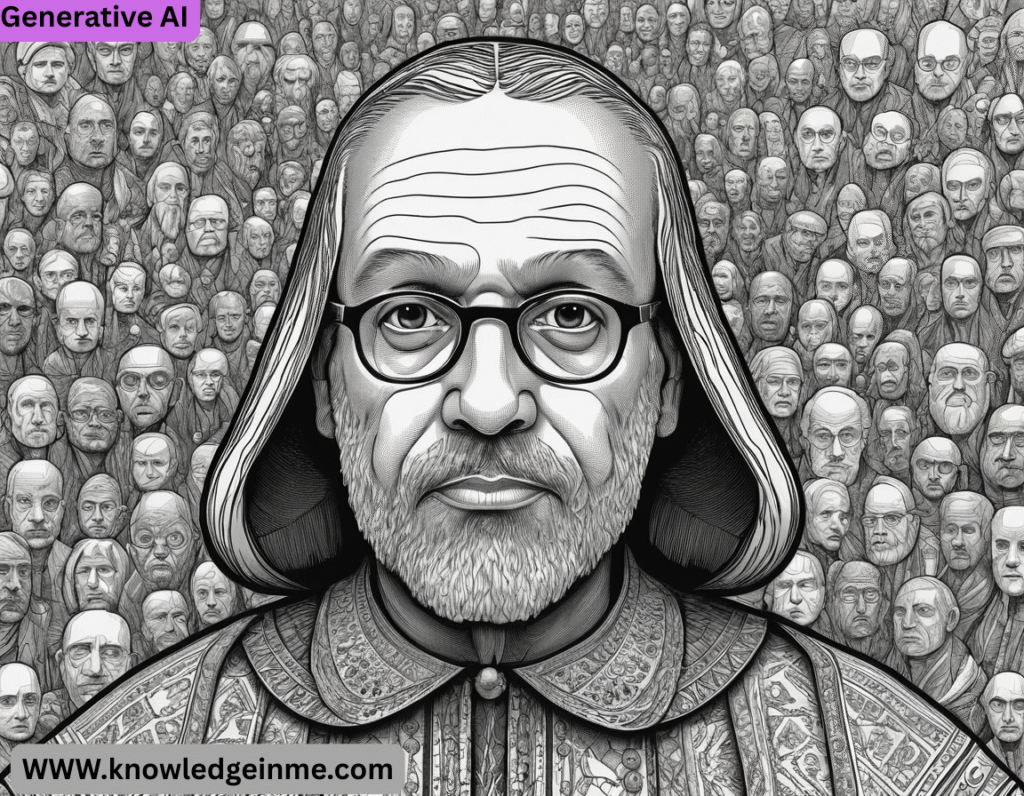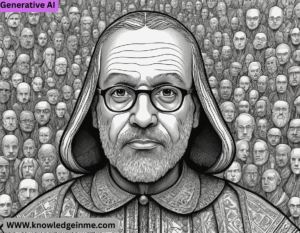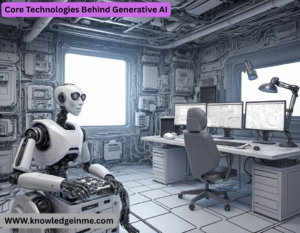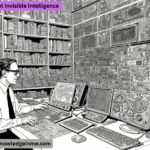Generative AI they have been trained on. Unlike traditional AI systems that are designed for classification or prediction, generative AI creates original outputs that mimic human-like creativity.
Key Aspects of Generative AI:
- Foundation Models – Many generative AI systems are built on large-scale neural networks trained on vast datasets, such as:
- Large Language Models (LLMs) (e.g., Open AI’s GPT-4, Google’s Gemini, Meta’s LLAMA) for text generation.
- Diffusion Models (e.g., Stable Diffusion, DALL·E, Mid Journey) for image generation.
- How It Works – Generative AI learns patterns from training data and uses probabilistic methods to predict and generate new content. For example:
- A text model predicts the next word in a sequence.
- An image model generates pixels based on a text prompt.
Applications:
- Text Generation: Chatbots (Chat GPT), content writing, code generation (GitHub Copilot).
- Image & Video: AI art, deep fakes, game asset creation.
- Audio & Music: AI voice synthesis (Eleven Labs), music composition (Jukebox).
- Healthcare: Drug discovery, synthetic medical data.
- Business: Personalized marketing, automated customer support.
Challenges & Risks:
- Bias & Misinformation: Models can reflect biases in training data or generate false information (“hallucinations”).
- Deep fakes & Misuse: Malicious use for scams, fake news, or impersonation.
- Copyright Issues: Debate over whether AI-generated content infringes on human creators’ rights.
Future Trends:
- Multimodal AI (models that process text, images, and audio together, like GPT-4V).
- Smaller, More Efficient Models (e.g., quantization, LORA fine-tuning).
- Regulation & Ethics: Governments are developing policies (EU AI Act, U.S. executive orders) to manage AI risks.
Core Technologies Behind Generative AI
- Generative AI relies on several key architectures and techniques:
Transformer Models for Text & More
- How it works: Uses self-attention mechanisms to process sequences (e.g., words in a sentence).
Examples:
- GPT (Generative Pre-trained Transformer) – Autoregressive (predicts next token).
- BERT (Bidirectional Encoder Representations) – Not generative, but foundational for understanding context.
- Use Cases: Chatbots, translation, summarization.
Diffusion Models for Images, Video
How it works:
- Uses a forward process (adding noise) and reverse process (denoising).
Examples:
- Stable Diffusion (open-source)
- DALL·E 3 (Open AI)
- Mid Journey (proprietary, high-quality art)
Variational Autoencoders VAEs & GANs Older but Still Relevant
- GANs (Generative Adversarial Networks):
- Two neural networks (Generator vs. Discriminator) compete to create realistic outputs.
- Used for deep fakes, art, and synthetic data.
- VAEs: Learn a compressed representation of data and generate new samples.
Multimodal Models Combining Text, Images, Audio
Examples:
- GPT-4V (Vision) – Can analyze and generate text from images.
- Google Gemini – Natively multimodal (text, images, audio).
2. How Generative AI Works Step by Step
Training Phase
- Data Collection: Massive datasets (e.g., Wikipedia, books, images, code).
- Preprocessing: Tokenization (for text), normalization (for images).
Model Training:
- Self-supervised learning: Predicts missing parts of data (e.g., next word in a sentence).
- Fine-tuning: Adjusts model for specific tasks (e.g., medical Q&A).
Inference (Generation) Phase
- Text Generation: Uses sampling (e.g., greedy, beam search, temperature control).
3. Cutting-Edge Applications
Creative Industries
- AI Art: Tools like Mid Journey, Stable Diffusion.
Music & Voice:
- SUNO AI (generates full songs from text).
- Eleven Labs (hyper-realistic AI voices).
Video Generation:
- Runway ML, Pi ka Labs – Text-to-video.
- Sora (Open AI) – High-quality video generation (not yet public).
Business & Productivity
- Code Generation: GitHub Copilot (based on Open AI’s Codex).
- Marketing: AI-generated ads, personalized content.
- Legal & Finance: Drafting contracts, summarizing reports.
Science & Medicine
- Drug Discovery: AI designs new molecules (e.g., Alpha Fold for protein folding).
- Medical Imaging: Synthetic data for training models.
4. Ethical Concerns & Challenges
Issue Examples Possible Solutions
Bias Models amplify stereotypes (e.g., gender/racial bias). Better datasets, fairness audits.
Misinformation Deep fakes, fake news. Watermarking, detection tools.
Copyright Who owns AI-generated content? New IP laws, opt-out policies.
Job Disruption Writers, artists, coders affected. Upskilling, AI-human collaboration.
Energy Use Large models consume massive compute. Efficient architectures (e.g., Mixture of Experts).
5. The Future of Generative AI
Key Trends
- Smaller, More Efficient Models:
- LORA (Low-Rank Adaptation) – Fine-tuning with fewer resources.
- Quantization – Reducing model size for edge devices.
- Agentic AI: AI that can autonomously perform tasks (e.g., Auto GPT).
- Regulation: Governments are stepping in (EU AI Act, U.S. executive orders).
Long-Term Possibilities
- Artificial General Intelligence (AGI)? – Some believe generative AI is a step toward AGI.
- Personalized AI Assistants – Fully autonomous agents handling work/life tasks.
- AI in Education – Custom tutors for every student.
- Training Secrets & Optimization Tricks
Scaling Laws Chinchilla Paper
- Optimal model performance depends on:
- Performance
- Dataset Size, Model Size, Compute
- Performance (Dataset Size, Model Size, Compute)
- Key Insight: For a fixed compute budget, balance model size and training tokens.
- Example: LLAMA 2 outperforms larger models by training longer on more data.
RLHF Reinforcement Learning from Human Feedback
- Step 1: Supervised fine-tuning on human-written answers.
- Step 2: Train a reward model to rank outputs.
- Step 3: Use PPO (Proximal Policy Optimization) to align the model with human preferences.
- Why it matters: Makes models like Chat GPT less toxic/more helpful.
Mixture of Experts MOE
- Only activate a subset of model weights per input (e.g., GPT-4 uses ~220B params but only ~55B per query).
- Saves compute: Enables massive models without proportional cost.
Quantization & Distillation
- Quantization: Store weights in 4-bit instead of 16-bit (e.g., GPTQ, GGUF formats).
- Distillation: Train smaller “student” models to mimic larger “teacher” models (e.g., Distil BERT).
3. Unsolved Problems & Active Research
Problem Why It’s Hard Current Approaches
Hallucinations Models optimize for plausibility, not truth. Retrieval-Augmented Generation (RAG), fact-checking layers.
Catastrophic Forgetting Fine-tuning erases old knowledge. LORA, memory-augmented networks.
Long Context Transformers struggle with >1M tokens. Hyena (long-context architectures), Ring Attention.
Energy Efficiency Training GPT-4 emits ~500 tons of CO₂. Sparse models, neuromorphic chips.
Multimodal Alignment Text + images + audio don’t perfectly fuse. Cross-attention layers (e.g., Flamingo).
4. Speculative Future: 2025–2030
Next-Gen Architectures
- Ret Net (Retentive Networks): Could replace Transformers with O(1) inference cost.
AI-Native Hardware
- Optical Neural Networks: Light-based chips for faster inference.
- Neuromorphic Computing: Brain-inspired chips (e.g., Intel Loihi).
Agentic AI
- Auto GPT-style Agents: AI that recursively plans and executes tasks.
- Self-Improving Models: AI fine-tuning its own weights (see AlphaGo Zero).
Societal Shifts
- Universal Basic Income (UBI): Debates intensify as AI disrupts jobs.
- AI-Generated Everything: >50% of internet content could be synthetic by 2030 (per GPT-5+).
5. DIY: How to Train Your Own Generative AI
For Text (LLMs)
- Dataset: The Pile, Common Crawl.
- Framework: Hugging Face Transformers + PYTORCH.
- Training: Use LORA to fine-tune LLAMA 3 on a single GPU.
For Images (Diffusion)
- Dataset: LAION-5B (public images).
- Framework: Diffusers library + Stable Diffusion.
- Trick: Use Dream booth for personalized generation.
For Music
- Tools: Open AI’s Jukebox, Meta’s Music Gen.
- Dataset: Free Music Archive (FMA).






